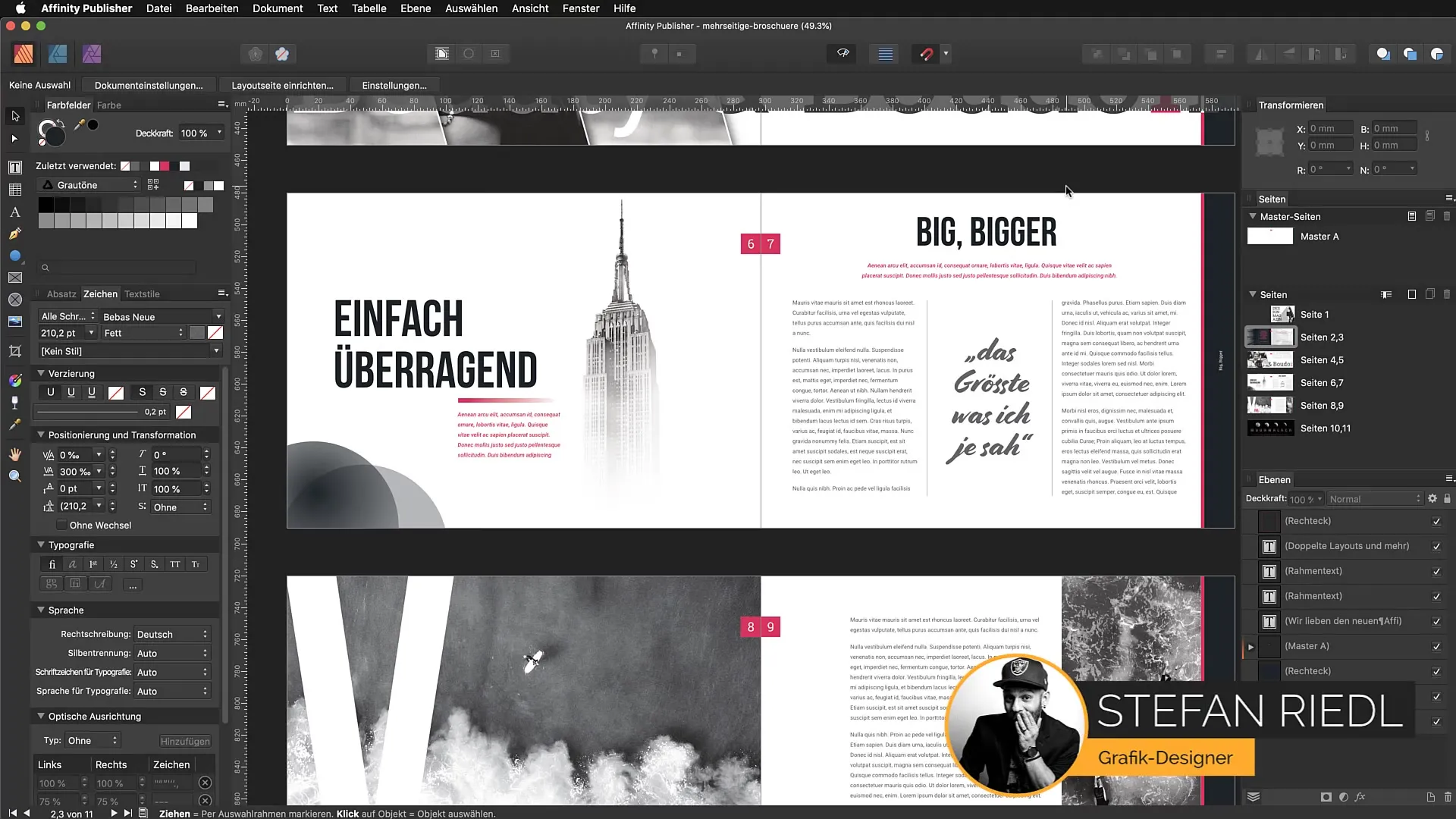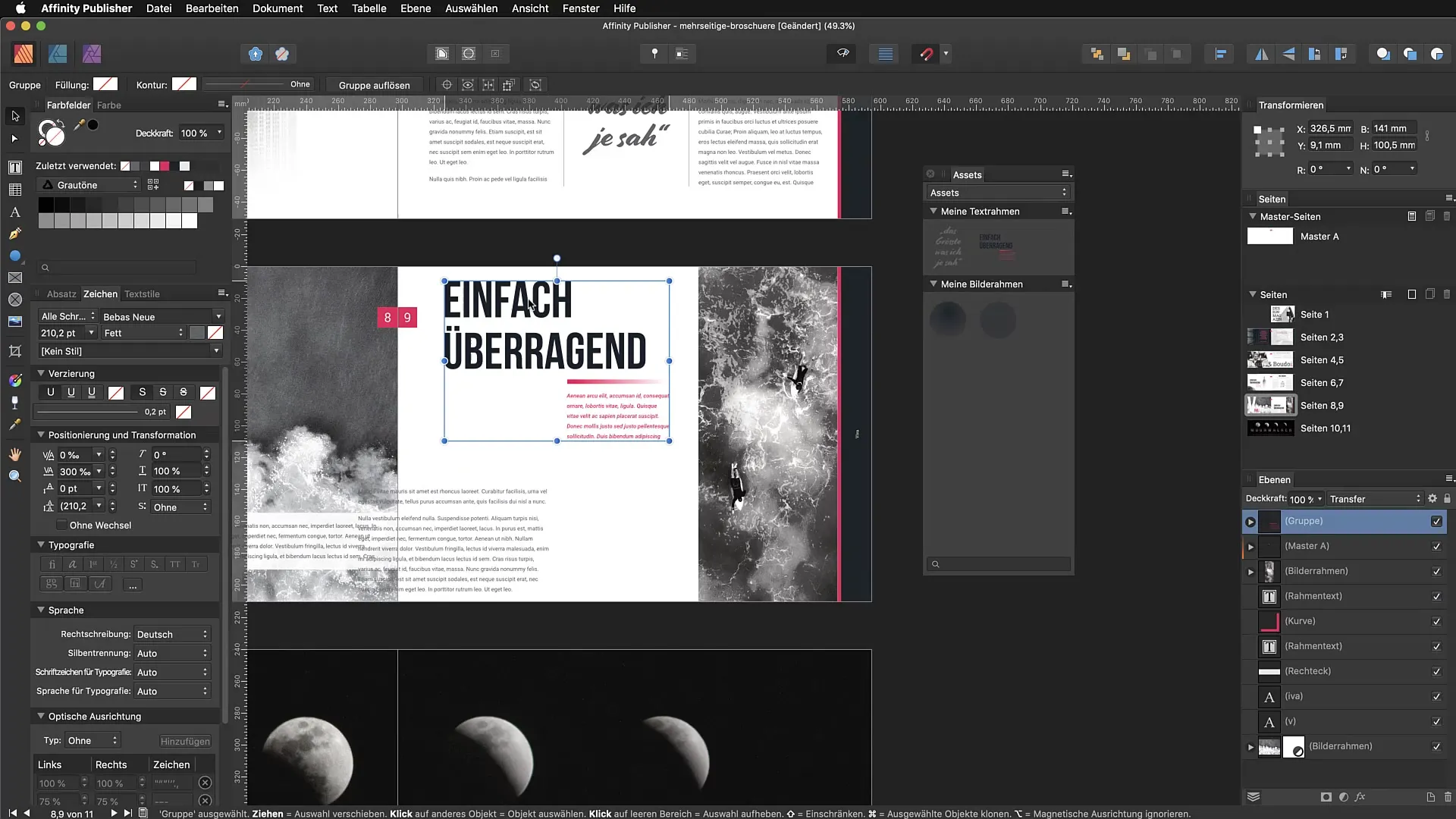Do you often work with recurring objects in AffinityPublisher? Then you surely know how important it is to handle them efficiently to save time and optimize your workflows. In this tutorial, you will learn how to store Assetsin libraries to quickly access your design elements like logos, author boxes, and more.
Key Insights
- Assets in Affinity Publisher help you quickly retrieve frequently used objects.
- You can create categories for assets and rename them later as needed.
- Assets can be stored in groups to enhance organization.
- Changes to saved assets do not automatically affect the library.
- Importing and exporting assets allows sharing between different users and projects.
Step-by-Step Guide
First, you need to activate the Asset Panel. The Asset Panel is empty by default but still offers you all the necessary functions for saving and managingyour assets. To find the panel, go to "View" and select "Studio" to open the Asset Panel.

To start organizing your assets, create a new category. By default, this category is called "Assets." To better structure your objects, you should rename this category. Simply select the category and give it a name like "Text Frames" to label it according to your usage.

You can create as many categories as you like to organize different groups of assets. For example, you could create one category for clients and a separate one for internal projects. Such a category could be named "Client XY," where you store the corresponding assets like logos and design variants.
Once you have created a category, you can begin adding assets. Select the object or objects you want to save, such as a quote or a graphic component. In the Asset Panel, you will find the option "Add Selection"; click on it to save your selection in the library.
You can also save grouped elements. To secure multiple objects at once, first group them. You can easily do this with the shortcut Command + G. Then you can add the entire group as an asset.
There is also the option to save style elements like color variants or special designs. For instance, if you have an author box that you use frequently, you can save it as an asset as well. Note that when selecting multiple elements, each element will be saved separately unless they are grouped together.
When you need an asset later, open your Asset Panel and drag the saved object to the desired position in your document. This is especially handy when you want to quickly access frequently used designs.

You have the flexibility to edit any of your assets. If you want to change the color of an element, you can easily do this in the document. However, keep in mind that changes will not be automatically updated in the asset library. You need to manually update the asset if you want the change to reflect there as well.

If you are working with several people, it can be useful to import or export assets. This is done via the functions in the context menu of the Asset Panel. You can save your assets on the computer and then re-import them on another machine to ensure compatibility of your work.

Finally, you can rename your saved assets. A good example would be if you save a quote box and give it a specific name to make it easier to find in the Asset Panel. Use the search function to quickly reach your asset.
Summary - Efficiently Save and Manage Assets in Affinity Publisher
With these steps, you can make your work in Affinity Publisher more effective. Saving and managing assets helps you quickly find individual design elements and use them in your projects. Be sure to regularly update your assets and share them with your team to ensure the best possible efficiency.
FAQ
What are assets in Affinity Publisher?Assets are predefined design elements that can be reused.
How do I create a new category?Open the Asset Panel and use the option to add a new category.
Can I save multiple assets at once?Yes, make sure they are in a group before adding them.
How do I update a saved asset?Change the asset in the document and save it again in the library.
Can I share assets with other users?Yes, you can import and export assets to share them.


